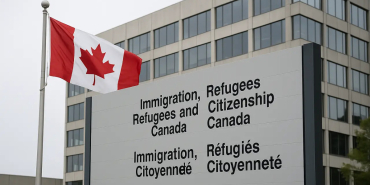Uncertainty Grows Over EB-5 Visa Rules After Federal Court Decision

A cloud of uncertainty hangs over the EB-5 Immigrant Investor Programme, as a federal court has declined to rule on a challenge concerning the required duration of investment for foreign nationals seeking permanent residency in the United States.
The court’s decision, delivered in Washington, effectively postpones resolution of a significant dispute, leaving investors and developers in a state of unease. The onus now falls squarely on the United States Citizenship and Immigration Services (USCIS) to provide definitive guidance through formal regulations, anticipated by November.
The EB-5 visa programme, a vehicle for stimulating the US economy through foreign capital, grants permanent residency to investors who commit substantial funds to qualifying American enterprises and generate or sustain a minimum of ten full-time jobs for domestic workers. While the standard investment stands at $1,050,000, a reduced threshold of $800,000 applies to projects situated within Targeted Employment Areas, defined by high unemployment rates or rural locales.
At the heart of the current predicament lies the interpretation of the “sustainment period”—the duration for which an investor's capital must remain committed to a commercial venture. Historically, the Immigration and Nationality Act (INA) mandated that EB-5 investors sustain their investment throughout a two-year period of conditional permanent residence. However, the enactment of the EB-5 Reform and Integrity Act of 2022 (RIA) ushered in substantial modifications to this prerequisite.
USCIS has interpreted the RIA as replacing the conditional residency-linked sustainment requirement with a fixed two-year investment period. This interpretation, however, allows for the two-year period to occur at any point, even before the investor's visa application or programme approval.
This stance has ignited widespread apprehension among stakeholders, who fear it could undermine the programme's integrity and diminish the economic benefits derived from foreign investment. The plaintiff in the case, Invest in the USA (IIUSA), a trade association representing EB-5 Regional Centres, has challenged USCIS’s guidance, arguing that it effectively shortens the investment duration and creates uncertainty for investors and developers alike.
The US District Court for the District of Columbia, however, dismissed the challenge as premature, citing the absence of a final rule from USCIS. The court underscored that the agency remains in the process of formulating formal regulations to implement the RIA, suggesting that judicial review would be more appropriate once those rules are finalised.
USCIS has reiterated its commitment to publishing a comprehensive Notice of Proposed Rulemaking (NPRM) by November, providing clarity on the programme's revised requirements. The NPRM will appear in the Federal Register and will be accessible online and in print.








Add new comment